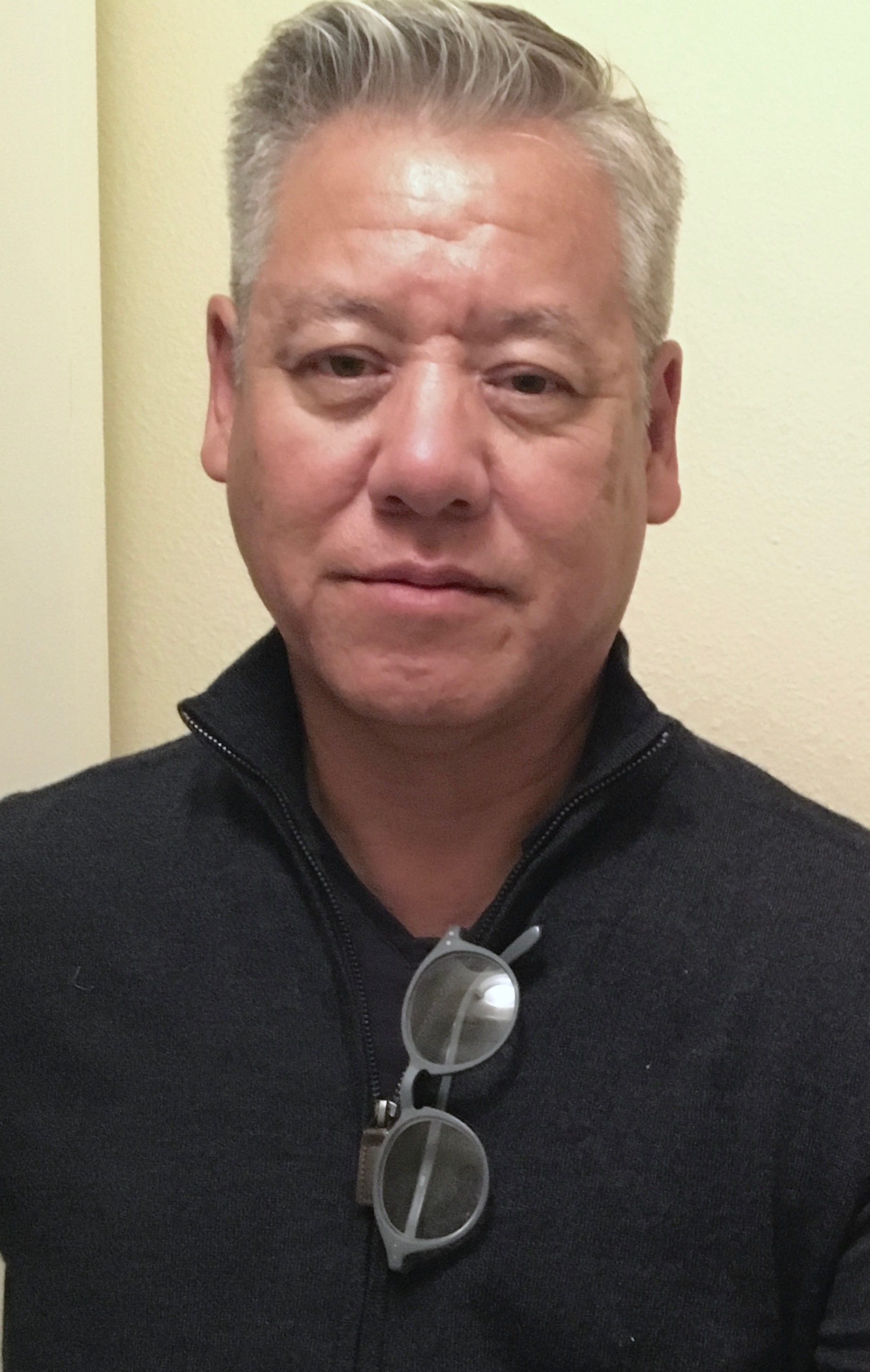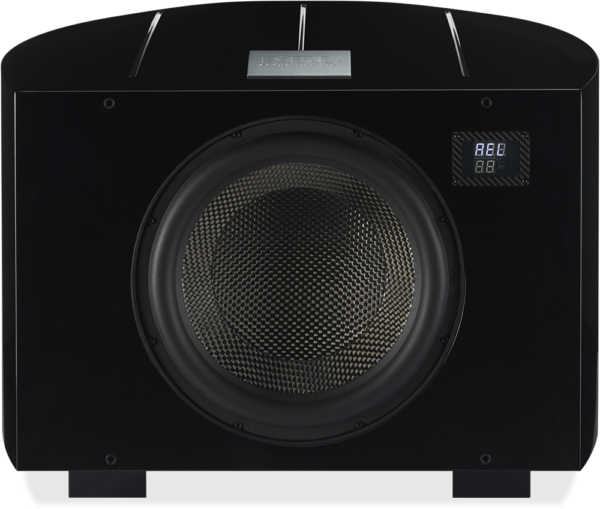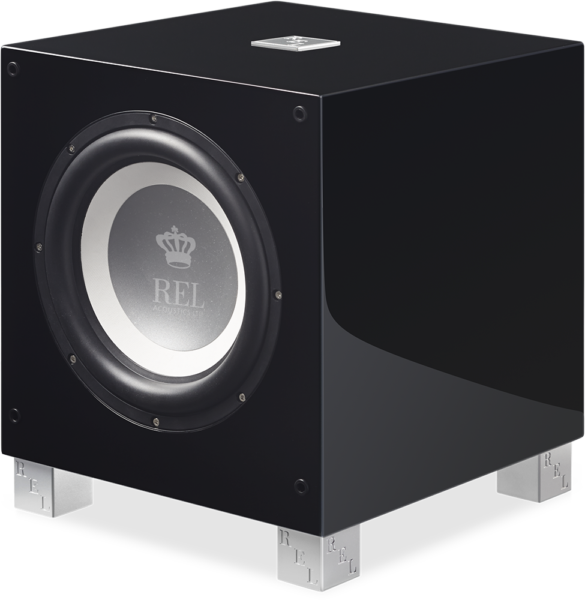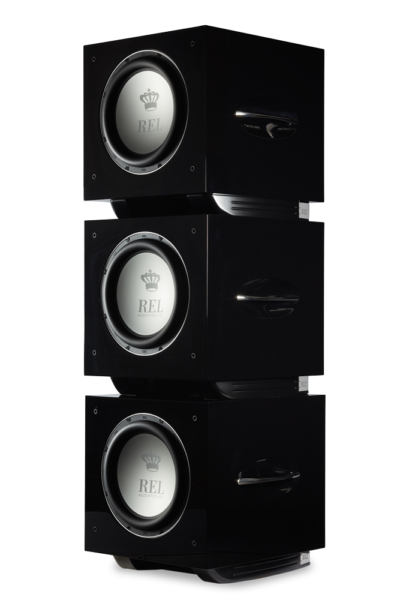Masters of Audio: Interview with John Hunter from REL

TMR: Do you remember the moment you became interested in audio?

John: I don’t really remember a time when I wasn’t interested in audio. It must be what bright young people today feel about code writing or game development, but it’s hard for me to believe they get the same thrill as music still provides me.
I grew up in the ‘60’s, came of age in the ‘70’s and there was so much of life that just revolved around music. I still remember where I was when The Beatles Let It Be came out (at a girl’s house I desperately wanted to get to know better but she was more interested in my best friend). I recall clearly the first two albums I ever owned given, as a Christmas gift, from my brother Rob who was always introducing me to wonderful new experiences. Led Zeppelin 2 and James Taylor Sweet Baby James; vastly different, yet hard to imagine two better poles from which to start a lifelong love of originally rock, then jazz and now classical-- and vinyl records.
TMR: What was your first “high-end” system comprised of?
John: I built up a college system that, looking back was pretty straightforward stuff for a college kid in the Seventies. A big Pioneer SX-1050 receiver, a pair of Bose 901 , and a Philips 212 turntable with a Stanton 681 EEE cartridge. One night we got wrecked and tried to blow the Bose up by attaching an ac plug to the end of the speaker cable. As I recall, we plugged it in, the thing made a hugely loud 60 Hz noise that went on for longer than it should have and then went dead silent. The next day, I took it apart and found that the first of the 9 drivers had burnt out and since everything after that was wired in series-parallel only one cheap little $15 driver was blown. Sounded like crap, but indestructible.
My first quality system was bought when I worked in retail and I picked up a Quad 33/303 pre and main used. I couldn’t understand how gear that was 20 years old at the time and low power-I believe the 303 amp was all of 45 watts – could sound so clear and powerful. The Pioneer it replaced was 125 watts and sounded muddy, ill defined, a tad brash and hard whereas the Quad simply delivered what for the time was highly resolved, natural sound. A year later I earned a pair of KEF 105.4s in a sales contest but opted to trade them for a pair of what were then called simply the Quad Electrostatic Speakers (now QUAD 57’s) which shaped my career as nothing before or since has taught me more about speaker setup and room acoustics than those Quads. MASTERS, a setup protocol I began developing back when I was twenty and eventually went on to become the platinum standard of the industry for teaching speaker and system set-up began with those old Quads.
TMR: You have been involved in high-end audio in various facets for a long time, from Sumiko all the way to your current involvement with REL (with many pursuits and successes in between). What role do you see yourself playing in this industry? Audio lover? Technical pioneer? Designer? Entrepreneur?
John: I’m certainly all of those things. For me, it starts with great gear because truly great equipment, brilliantly setup, is what unlocks music in a deeply satisfying and almost magical way. There is something about 3-dimensional reproduction of music that disarms utterly even the most skeptical listener.
My next goal? I’d like to try my hand at loudspeaker design. I find the current state of the loudspeaker art to be desultory. Some of it comes down to the large number of companies owned by private equity groups. Their effect is corrosive on the industry, it tends to homogenize speaker offerings and freezes the companies in a sort of perpetual product-trance, where nothing bold is explored because they simply want to keep profits churning. They’re not trying to build the best speakers, they’re trying to make the most money and that’s never in the customer’s highest interest. We have to be able to deliver better than I’m seeing in this crucial category—speakers are where the emotion in a system resides and we need to get back to delivering greatness, not mere adequacy at high profit margins.
TMR: You took over ownership of REL in 2005. What drew you to the company and what did you see in its future that perhaps others didn’t?
John: We owned SUMIKO, were the largest distributor in the world for REL and we loved REL. We didn’t want to see it abandoned to others who almost certainly didn’t share our connection with its roots and what Richard (Lord) had started. The unknown back story to the purchase is that Donald and I spent 3 years convincing Richard to keep going—great entrepreneurs we were, eh?. Donald’s Dad was a very successful businessman himself who invented the cellophane book cover used on every library book for, well, forever. His Dad had an amazing work ethic so Donald concocted a plan that required Richard to keep working as long as Donald’s Dad did; that Richard could only retire when Donald’s then 86-year-old father retired. After three years of Richard wistfully inquiring at each subsequent CES “Has he retired yet?” only to be told that, no, indeed he was actually now working 6 days a week! Damn! Finally, one day at a CES in Vegas he turned to us and said “Lads, it’s either you or some nameless Korean or Chinese company. Which is it to be?”
My vision for REL’s product direction in 2005 was simple, evolved from one of my best friends and mentors, Franco Serblin, who designed every great Sonus faber. For products to be successful, for companies to have any right to exist in the (2005) future, I reasoned their products must be things of surpassing beauty. Whatever the product, your first experience of it is visual, then if it is truly lovely you want to touch it. Only after one has this experience, does sound quality come into play. And the sonic experience has to be shatteringly better than the expectations of the customer. After all, that customer only gets to have one first experience of that product–we owe them our best.
I‘ve stayed true to this approach and it’s every bit as true now as then. We took a category filled with ugly boxes and made something beautiful of it. We took a category that was disdained at the time and worked hard to transform the industry’s understanding of what a subwoofer could be–what full range music and film could feel like. That full range sound is necessary. Today, it is understood wisdom that systems simply aren’t complete—aren’t even trying—if they don’t have the capacity to be full range which, for most serious students of the art means the appropriate partnering REL.
TMR: If you could boil the essence of the REL brand down to one unique quality or characteristic, what would it be? Why is that important to you?
John: Transformative. Prior to the modern iteration of REL (post-2005) subs were hopelessly slow, ponderous devices. Today, REL customers can buy products that most would agree are far more beautiful, take up less than half the space, play far louder, go far deeper, are infinitely faster and cost (on average) 1/3 of what their equivalents from twenty years ago did. Deep value. That’s something to be proud of. I never forget that I came from humble roots, so I always try to watch out for the little guy, for the young person on a tight budget or the teacher saving a couple of years to purchase an upgrade. We value all our customers—it’s a sacred trust to me—but I hold a very special place close to my heart when I see people really sacrificing to own just a few things really special to them. When it’s one of my designs they choose, it’s overwhelming.
TMR: In the legacy of products you’ve been involved with, what have been some of your favorites? And why?
John: The first Blue Point phono cartridge and the Blue Point Special. They outright saved SUMIKO as a company in 1990 and 1991 but meant far more to me than that. It was the first time I’d ever designed anything and that they were so well-received right from the start, it gave me true confidence in my design instincts.
I’ll never forget sending over my first handbuilt prototype of the Blue Point Special ( a highly successful moving coil cartridge). Our incredible Japanese partners who were tasked with constructing it took 3 months to build and ship over a standard cartridge, complete with a body and stylus guard—very old school-looking. They couldn’t believe when I explained that, no, it had to have NO body and there was no point to a stylus guard because people were going to destroy the thing trying to install the damned guard. In the end, they built it exactly as I envisioned and the Blue Point and Special version went on to become some of the most successful cartridges in the history of our little industry.
For REL, I’d have to say the No.25, the T/5i (a wonderful and affordable product) and these new models that will be arriving soon – the latest generation of Serie S are insane. Can’t say more than that. Oddly, I’m really taken with the work we did on the affordable HT range which provides REL qualities for theatre with HUGE dynamics and speed at cost that remind me of the Ikea ad from a couple years back where the woman comes running out of Ikea carrying packages and yells to her husband “Start the car, start the car!” because it seems too good to be true, she’s sure she’s stealing it. It gives beginners a wonderful place to start, but for serious devotees of high end theatre, it produces .1/LFE channels that match our classic RELs abilities and opens up all sorts of possibilities for building edge of the art systems in combination with classic RELs.

TMR: We love the new REL products, but pre-owned gear is our passion as you know, and we see a fair amount of pre-owned REL gear (although it always sells quickly) come through from decades gone by. Why do you think REL products still sell so well on the second hand market? What draws people to it?
John: I personally look at a brand’s ability to command high (used) prices and sell fast in the used market as an important hallmark of a great brand. Does only the older stuff hold up? Oops, you have a problem. There’s a natural cycle to used equipment. Newly minted used gear drops a fair amount just after it is sold. Within a few years, the cream begins to rise to the top and great products stabilize and then begin climbing. We are now getting calls for G-2’s that went out of production three years ago and their price used is climbing. Try to buy a pair of Sonus faber Extrema for under $10,000—good luck. But 6-7 years ago they were all over the place for $6k. Why the increase? Because, like Porsche 356’s, they aren’t making any more of them and if you want THAT experience you will have to pay. Also, they are on many discerning listener’s Top 5 of all time speakers. I own the second to last pair ever produced, serial #998 because I preferred the wood on this pair to the wood on #999. I’ll never sell them.
I love classic equipment—just bought a pair of the original 1988 Wilson WATTs (serial #’s 85 and 86) and they provide deep insight to what a genius Dave Wilson was when stripped down to the basics. He was an incredible man with a wonderful sense of humor and just utterly brilliant at making amazing sound. Also perhaps the best set-up artist ever and an incredible demonstration artist. I’ll miss him.
But I worry about used gear because so much of the new product being churned out right now is lower in quality than many speakers that are ten years old and older. Apart from Andy Payor of Rockport and the Wilson team, few are really working hard at the state of the art. The simple solution is more designers need to get off their asses and build far better products. It’s one of the corrosive effects of private equity groups buying up companies of genuine quality and character, then stripping them of that character and ordering design teams to simply reprise the same thing over and over. Saves money, produces speakers that have all the impact of melted ice cream.
TMR: I read that you love to surprise people with what’s possible in the reproduction of sound. How do you see REL doing this and how are they shaping the future of the audio industry?
John: Until REL came along, who would believe that a subwoofer, an object of derision guilty of muddying up not just the bass but all the music could, instead, allow music to soar? To take flight on a cushion of air captured by the recording microphone, to highlight harmonic delicacy and restore the rich tonal colors otherwise present only in live music? It would be really interesting to visit the rest of the musical spectrum and see if we couldn’t do something important for the other 9 octaves of music and film sound!
TMR: Why is music important to you?
John: I think music’s important to everyone. It is, after all, the universal language. Take 10 little kids from different countries and speaking say, four different languages. Leave them alone for ten minutes and likely little to no conversation would take place. Then turn on some music with a strong beat and watch pretty much all of them will start bobbing their heads in time with the music, the more adventurous will start dancing. Music is one of those things that all human beings have encoded in our genetic firmware. Wherever it is we’ve come from, it had awesome music because it’s firmly embedded in our core race memory.
TMR: What current project are you most excited about working on when you wake up in the morning?
John: Our next one, it’s weird because as a designer you’re always living 1-3 years in the future. When we release a new product or range and someone comes up to me and compliments us, my first thought is suspicion (“How do you know about our latest project?”), then I realize they’re talking about something that for us is a problem set that Justin, Alex and I solved 18 months back. LOL.
I have to say, the next generation of S will be incredible in every way possible. It’s still a few months out but we’re all excited to see how people will react to it. [Edit: Since this interview was conducted, REL has released the new S/510 SHO and S/812 SHO subwoofers, the latter of which is shown in the photo above.]
TMR: What keeps you hungry in the audio world? What drives you to continue in the excellence and innovation people have come to expect from you?
John: Never letting friends down, keeps us doing our best work. Our customers become friends, I always want them looking forward to our next works. In the end, it comes down to being able to deliver more of the emotional content in music or film that drives me hard.
TMR: Failure or perceived failure can be such a powerful teacher in life. What has been your favorite failure and how has that influenced your subsequent projects?
John: I conceived of this idea to build a 4” thick high performance thin on-wall sub. Why go through all the head ache of installing inside a wall? If it looks great and is easily installed, it will be a no-brainer, especially if there were no wires, so we developed a state of the art wireless protocol we named LongBow. Well, it was a no brainer, but not in the way one hopes for. We misjudged customers desire to not see a custom installation sub. It sold and people who tried it loved it but it sold in the few hundred-per-year quantities, not thousands that we needed it to be a success. In the end, we learned something and the LongBow has gone on to be a true success and we believe high end wireless is just beginning to be accepted as legit. People who really follow things know we have a leg up on pretty much everyone when it comes to wireless implementation.

TMR: What would you like your legacy to be personally and professionally?
John: I’m too young to think of legacy stuff, ask me in 20 years! LOL. But I know this, I care deeply about customers and what is best for them. I personally answer, in depth, about 10 emails per week dealing with room acoustics, ideal matching RELs for unusual cases and the like. Customers are smart, but they’re starving for true knowledge. We’re awash in loads of technical information, but judgement borne of experience gleaned from decades of setting up thousands of systems in varieties of environments and rooms is thin on the ground. Great sound with great style and attention to tiny design details, coupled with sound that helps the listener get to the emotional core of music and film.
TMR: You created the Master Set, a protocol for speaker set up. How did you come up with this? Do you enjoy the education or innovation elements of a project like this?
John: MASTERS (it’s not called the Masters Set) is a system I created from experimentation and study I put into the art of speaker and system set-up for about 20 years-then we spent 13 years training (for free) the best of our dealers (around 1500 people came through). It puts the room’s contribution into the equation in the one area that it can be beneficial and windows out as much of the room’s shortcomings as possible. Since the room accounts for about 70% of the potential in a system, getting this right creates an inordinate benefit for the listener whose system is dialed in by a MASTER. There are only about 10-12 in the world skilled enough to do this on any system in any room.
TMR: Does the future of High-end audio fit in your pocket? Or will houses one day be built with dedicated listening rooms standard?
John: Both, I think. But from a performance standpoint, high end audio will always be for the 3-4% who hear great sound, get hooked and won’t give up until they create a system capable of playing the golden note in their own homes. It can take decades to get there, but that’s part of the fun. Smart phones and the like bring tremendous freedom and access to music–Spotify, Apple Music, etc. make huge libraries of (mostly pop, country and rock) available but they are delivered by sound that a recent conference on the appalling quality of sound on smart phones described as being “beneath the standards of telephony that have been established for over 100 years.” But as a control device that allows one access to high-ish (sorry, I’m not an adherent of the sound quality of streamers—simply too compressed sounding) quality sound. They’ll be a wonderful way to quickly access your tunes.
Sorry, even in my most fevered dreams, houses don’t come standard with excellent soundrooms built using Golden Mean Theory. But they needn’t cost an arm and a leg either so it’s really an area for customers to focus their attentions on. Our incredible sounding studio at REL was built for a budget of around $20,000. It had two walls that were partially usable (most of the studs were reused) but everything else was done from scratch using expensive Northern California contractors and expensive materials. It sounds amazing and is a medium-sized room. We did it all in one go, but one could build the bones of the room for $10,000 and then detail out all the acoustic treatment as the budget permits. Many clients we speak with spent more than $20,000 on their latest preamp which is incrementally better than the last three preamps they’ve owned but their room won’t allow it’s 1% better sound to emerge because it’s a terrible room.

